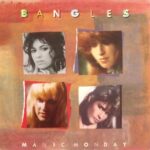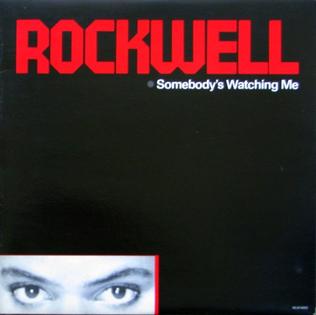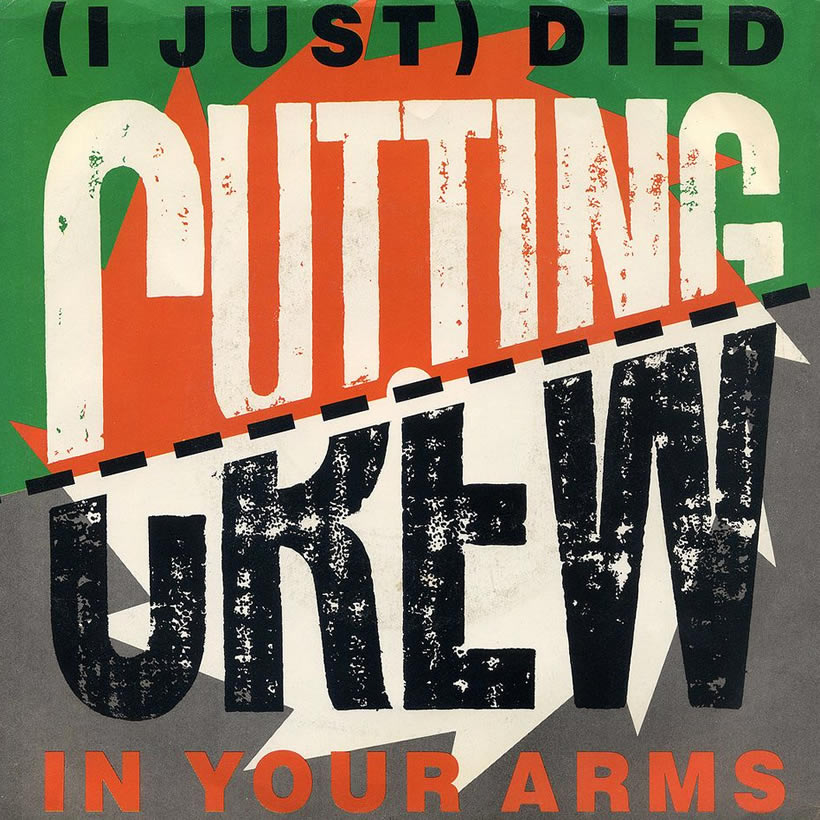 In 1986, The Bangles released Manic Monday, a track that would become one of the quintessential anthems of the 1980s, perfectly blending jangly pop charm with relatable, slightly tragic humor about the universal curse of early-week monotony. Written by Prince under the pseudonym “Christopher,” the song was a marriage of infectious melody, clever songwriting, and impeccable harmonies. Its appeal is immediate: even decades later, anyone who has felt the slow crawl of a Monday morning can’t help but nod along—or, better yet, sing along at the top of their lungs.
In 1986, The Bangles released Manic Monday, a track that would become one of the quintessential anthems of the 1980s, perfectly blending jangly pop charm with relatable, slightly tragic humor about the universal curse of early-week monotony. Written by Prince under the pseudonym “Christopher,” the song was a marriage of infectious melody, clever songwriting, and impeccable harmonies. Its appeal is immediate: even decades later, anyone who has felt the slow crawl of a Monday morning can’t help but nod along—or, better yet, sing along at the top of their lungs.
Manic Monday opens with a sprightly keyboard riff that feels like a gentle tap on the shoulder, coaxing you out of bed, whether you’re ready or not. Layered atop a crisp drumbeat and ringing guitar, the instrumentation is deceptively simple, yet the balance of elements creates a rich, vibrant pop tapestry. The production is quintessentially mid-80s, with bright tones, clean lines, and a polish that lets every instrument and vocal flourish shine. There’s a perfect blend of energy and polish that makes the song both approachable and enduring.
Vocally, The Bangles are at the top of their game. Susanna Hoffs’ lead vocals are sweet, slightly wistful, and effortlessly charismatic, conveying a genuine sense of exasperation that matches the lyrical content. Her delivery captures the frustration of a Monday morning with such authenticity that it’s impossible not to empathize. The harmonies provided by bandmates Debbi Peterson and Vicki Peterson add depth and warmth, creating a lush vocal texture that elevates the track beyond standard pop fare. The combined vocal approach gives the song a sense of camaraderie—as if a trio of girlfriends is collectively lamenting the misery of the workweek while simultaneously making it sound like the best part of the day.
Lyrically, Manic Monday is brilliantly relatable. The song chronicles the struggle of waking up, facing responsibilities, and lamenting the end of the weekend—a theme that transcends generations and geography. Lines like “It’s just another manic Monday / I wish it was Sunday” capture the universal longing for rest, leisure, and the fleeting joy of weekend freedom. Yet the song delivers this sentiment with a sense of humor and musical charm that prevents it from becoming dour or whining. Prince’s knack for storytelling shines here: the lyrics are concise, vivid, and clever, turning everyday frustration into a memorable pop narrative.
The song’s structure is a masterclass in efficient pop songwriting. With a running time just over three minutes, it doesn’t waste a moment. The verses establish the story and emotional tone, the pre-chorus builds anticipation, and the chorus delivers the cathartic, singable payoff. There’s also a subtle dynamic interplay between sections: the verses feel slightly introspective, while the chorus bursts forth with energy, mirroring the contrast between the slow, reluctant crawl of a Monday morning and the impulsive desire to sing, scream, or dance your way through it.
Instrumentally, Manic Monday is deceptively sophisticated. The jangly guitar riffs, bright keyboard flourishes, and tight drum programming work together to create a sparkling sonic backdrop for the vocals. Each instrument occupies its own sonic space without ever clashing, demonstrating careful production and thoughtful arrangement. The guitar riffs are particularly noteworthy: they provide rhythmic momentum and melodic hooks that complement the vocal lines without overshadowing them, enhancing the song’s memorability. The keyboards add color and texture, while the rhythm section keeps everything moving forward with subtle flair.
The song’s chorus is arguably its most iconic feature. It’s catchy, punchy, and irresistibly singable, the kind of chorus that lodges itself in the listener’s brain after a single play. Its melody is buoyant and uplifting, contrasting with the lamenting lyrical content, which creates a delightful tension. This combination of bright melody and slightly mournful lyrics is one of the reasons the song has remained a staple of pop playlists for decades—it’s the perfect encapsulation of bittersweet joy, turning a mundane workday into a universal anthem.
Another element that makes Manic Monday special is its production. Unlike some highly processed 1980s pop tracks, this song retains a sense of warmth and immediacy. The vocals sit forward in the mix, crisp and clear, while the instrumentation provides depth without overshadowing the story. Each sound is intentional: keyboards shimmer without blaring, guitars jangle without cluttering, and percussion adds both drive and lightness. The mix’s clarity allows the listener to appreciate the intricacies of each component, from subtle vocal harmonies to rhythmic accents, creating a listening experience that feels both polished and organic.
Humor and charm permeate the song. Despite the plaintive longing for Sunday and disdain for the workweek, there’s an underlying sense of playfulness in both lyrics and performance. Hoffs’ vocal inflections, the harmonic interplay, and the instrumental touches all convey a tongue-in-cheek sensibility that keeps the song fun and engaging. It’s a pop song that understands its audience: office workers, students, and anyone who’s ever dragged themselves out of bed can instantly relate, yet the delivery keeps things lighthearted rather than wallowing in despair.
The rhythm of the track is another highlight. The drums and bass lock in tight, providing a steady pulse that drives the song forward while leaving plenty of room for the melodic instrumentation and vocals to shine. The rhythmic flow mirrors the cyclical nature of the workweek: a steady forward motion punctuated by moments of musical flourish. This subtle mirroring of content and form is part of the song’s genius—it’s pop music that not only tells a story lyrically but reinforces it musically.
Manic Monday also benefits from the playful synergy between the band members. The vocal harmonies, instrumental interplay, and rhythmic coordination suggest a band comfortable with one another, capable of delivering music that is polished yet spontaneous. There’s a sense of camaraderie that translates directly to the listener: it feels like you’re being invited into the group’s fun, sharing in their frustrations, joys, and clever musical ideas. This synergy contributes to the song’s enduring appeal, making it as enjoyable today as it was in 1986.
The song’s instrumentation is deceptively complex in its subtlety. Jangly guitars interweave with melodic keyboard lines, creating a layered texture that feels light and airy yet harmonically rich. Basslines move melodically rather than purely rhythmically, adding depth and interest, while the percussion adds rhythmic nuance that keeps the track moving without ever feeling frantic. This careful balance of melodic and rhythmic elements ensures that each listen reveals new details, from subtle fills to harmonic choices, enhancing its replay value.
Production techniques of the mid-1980s are present but tastefully employed. Synths add brightness and color, while the vocal treatment maintains clarity and warmth. Effects are used sparingly, letting the natural timbre of instruments and voices shine. The production reinforces the song’s accessibility while allowing the technical craft of performance and arrangement to come through. This combination of technical proficiency and pop sensibility is key to why Manic Monday has stood the test of time.
Culturally, Manic Monday captured a specific moment in mid-80s pop music. It emerged when synthesizers were becoming central to the mainstream sound, and yet The Bangles retained a jangly, guitar-driven sensibility that set them apart from contemporaries. The song’s playful yet relatable commentary on the working week resonated with listeners, helping the band secure their place in pop history. Its success demonstrated the power of merging witty storytelling, infectious melody, and polished musicianship—showing that pop music could be both clever and commercially viable.
The song’s bridge offers a brief departure from the main narrative, adding variety and tension. The instrumentation pulls back slightly, giving space for a subtle keyboard flourish and rhythmic variation before returning to the familiar chorus. This dynamic shift prevents monotony, adding musical interest while emphasizing the return to the central theme of the relentless Monday. The bridge’s understated complexity highlights the band’s attention to detail and enhances the track’s overall flow.
Manic Monday remains relevant not just for its catchy melodies but for its universal message. The struggle with mundane routines, the longing for leisure, and the humor in everyday frustration are experiences that resonate with listeners across generations. The combination of relatable lyrics, polished production, and masterful performance ensures that the song continues to be celebrated, played, and covered decades after its release.
In conclusion, The Bangles’ Manic Monday (1986) is more than just a catchy pop song—it’s a masterclass in melody, arrangement, and lyrical storytelling. Its infectious chorus, jangly instrumentation, and playful yet relatable lyrics make it an enduring anthem for anyone who’s ever felt the drag of early-week responsibility. Hoffs’ vocal charm, combined with the band’s tight harmonies and polished production, creates a track that is both fun and musically sophisticated.
Whether experienced as a nostalgic blast from the 1980s or discovered anew by younger generations, Manic Monday captures the blend of humor, energy, and technical skill that defined The Bangles’ approach to pop music. It’s a song that simultaneously entertains, delights, and empathizes with its audience—a rare achievement in pop. Its catchy hooks, precise instrumentation, and relatable lyrics have ensured its longevity, making it not just a highlight of The Bangles’ catalog, but a defining track of its era.
Ultimately, Manic Monday is a reminder that great pop music can be simultaneously clever, emotionally resonant, and irresistibly fun. The Bangles took a universal experience—the dread of Monday mornings—and transformed it into a sparkling, unforgettable musical experience that continues to resonate. Its bright melodies, witty lyrics, and impeccable harmonies make it a quintessential 1980s track, proving that even the gloomiest days can be transformed into something joyful when the music is right.


